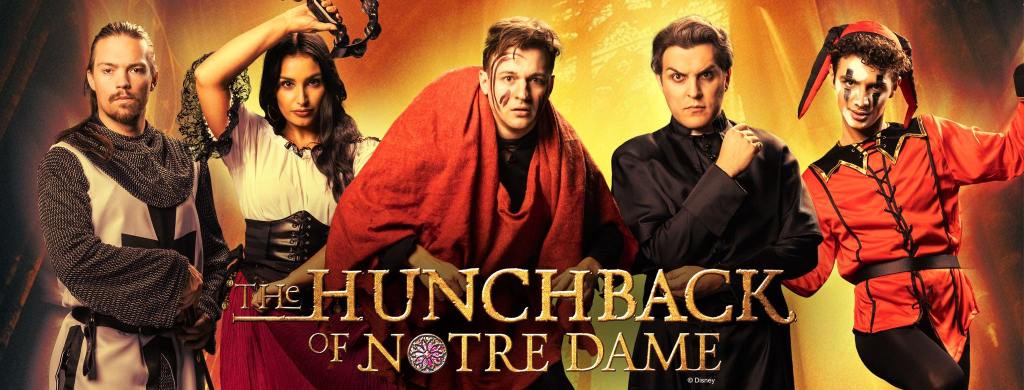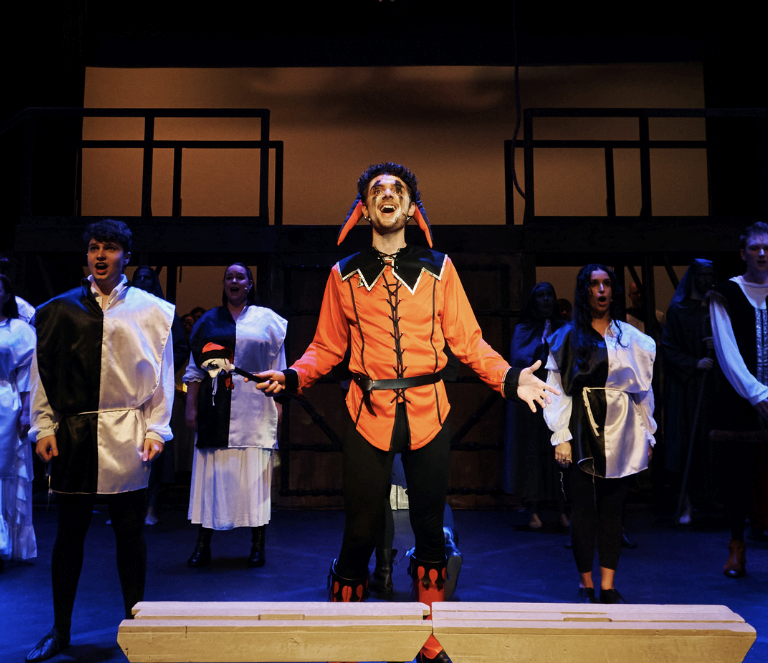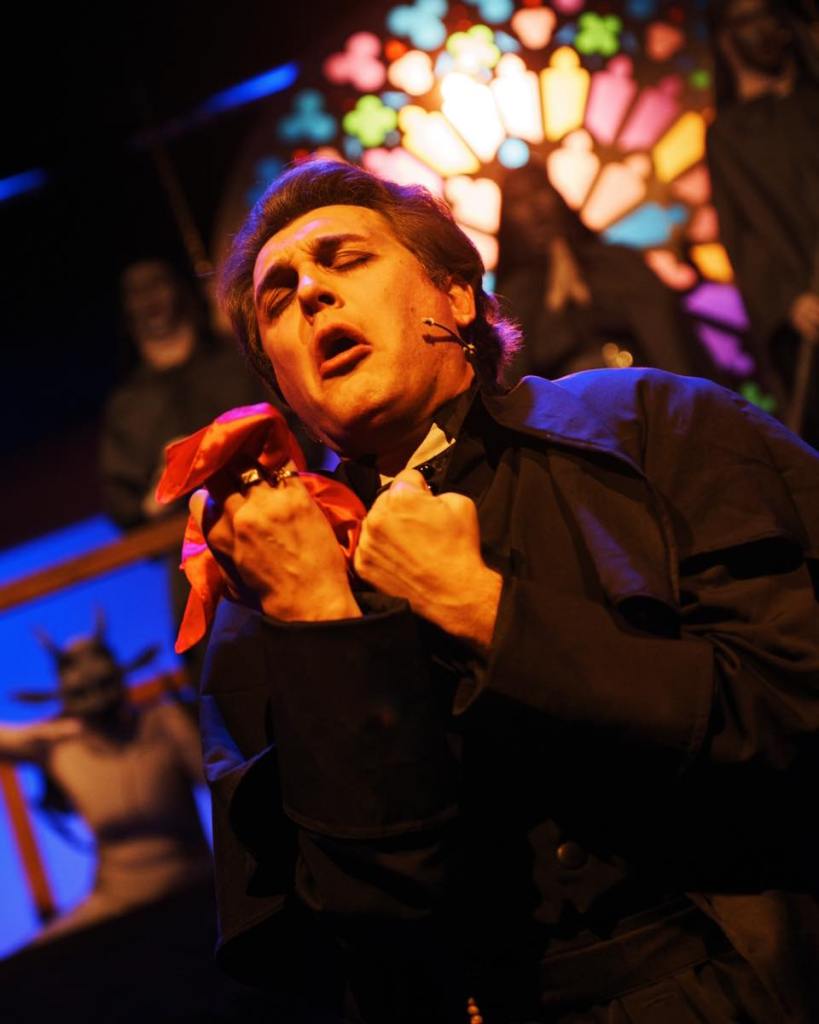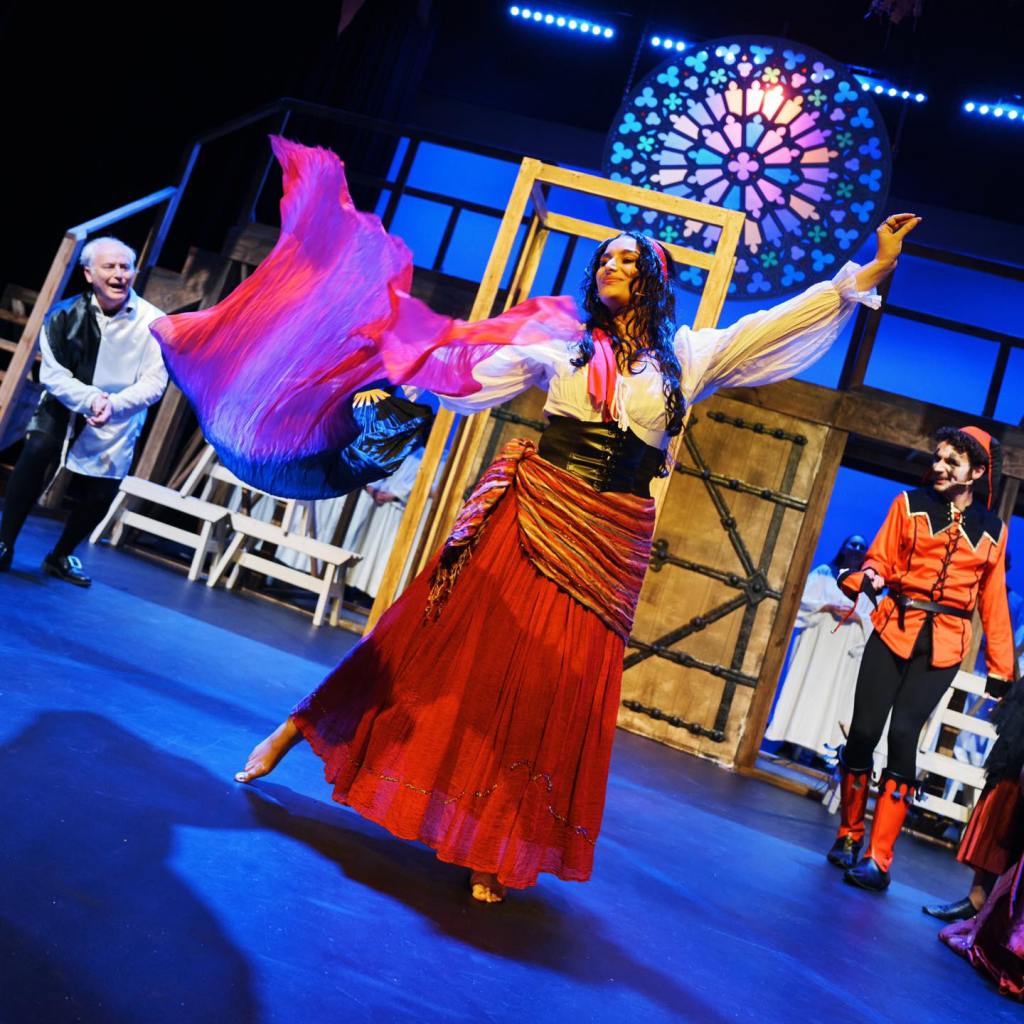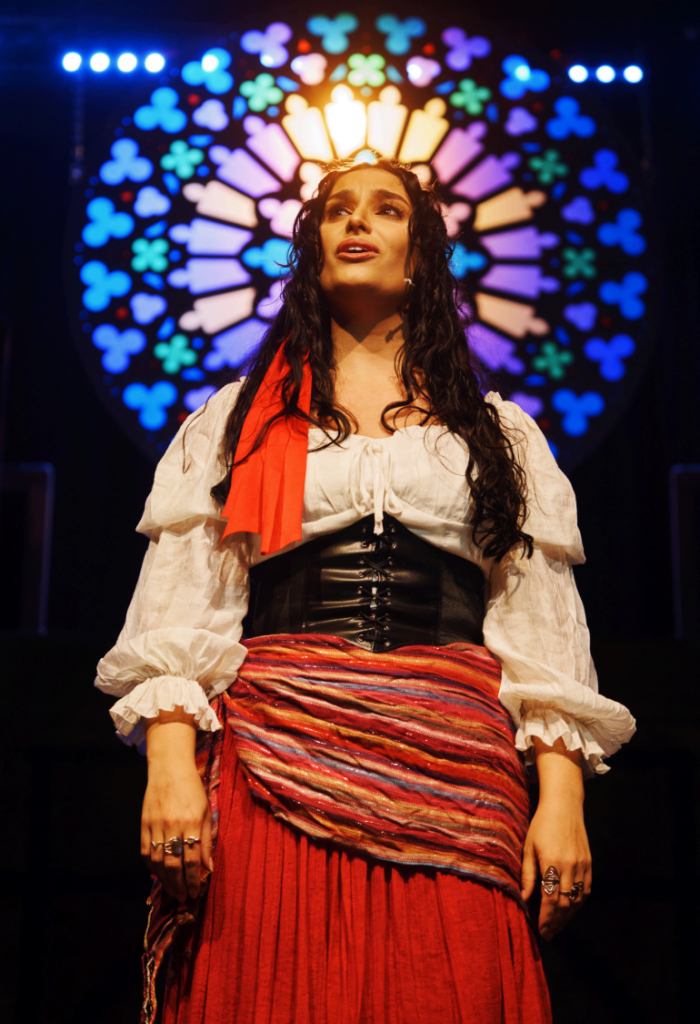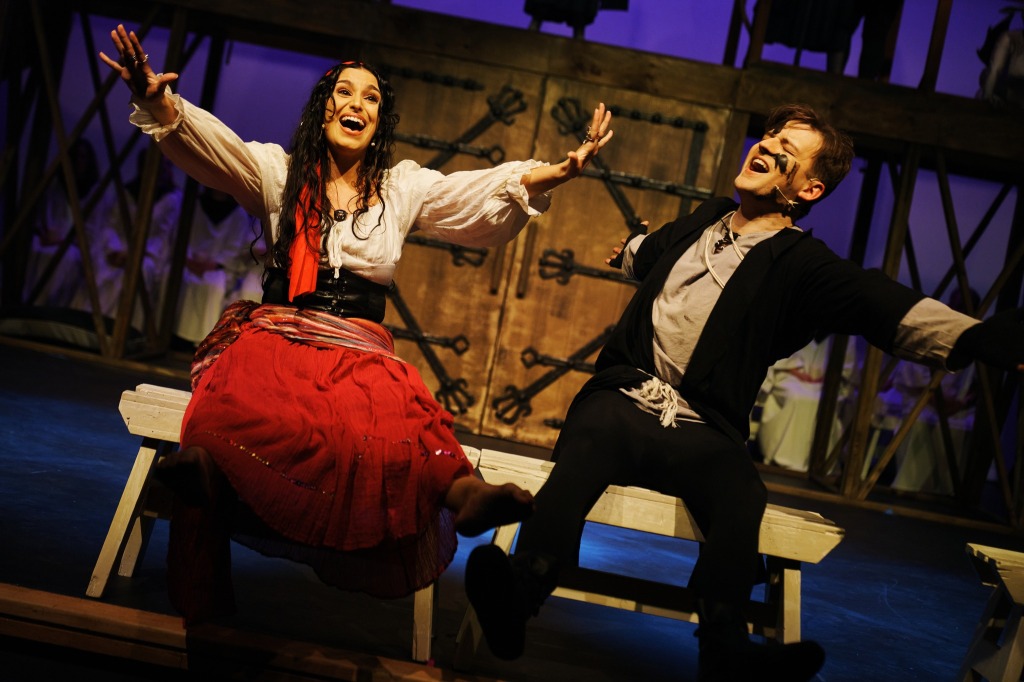The Hunchback of Notre Dame (Beenleigh Theatre Group)
Crete Street Theatre
June 7 – 22
One of the features of Beenleigh Theatre Group’s programming has always been its inclusion of nuanced choices within its seasons. This has continued in 2024 including with its latest musical, “The Hunchback of Notre Dame”, the controversial, rarely performed musical adaption of Disney’s 1996 film of the same name, with music and lyrics by Alan Menken and Stephen Schwartz, and English language book version by Peter Parnell. And the result of this is simply wonderful. Indeed, this is a production of humour, heart and hyperbolic greatness, amongst the most satisfying community theatre works I have seen, even without live band provision of its sweeping score.
The grand story, based on the 1831 novel of the same name by Victor Hugo tells of the legendary disfigured bellringer of Notre Dame cathedral Quasimodo (Michael Ware) and the free-spirited gypsy girl Esmeralda (Nykita O’Keeffe) who coaxes him from the shadows, despite his oppressive master (and uncle) Dom Claude Frollo’s (Reagan Warner) iron-grip rule, wrathfully pursuing his believed duty to purge Paris of sinners. For Quasimodo (which means half-formed), the Cathedral is his home and whole universe, but all that is about to change as ‘The Bells of Notre Dame’ not only welcomes the audience to early morning in Paris and the song of the city, but the talent of the production’s principal cast.
It’s 6 January 1482 when the ‘Topsy Turvy’ Feast of Fools sees the streets filled with savoury gypsies who are on this day free to roam without fear of arrest, much to the protestation of the Archdeacon of Notre Dame. From where we first meet him in flashback, the devout Frollo has risen quickly through the ranks to follow in his father’s footsteps to have a high position of responsibility within the Catholic Church. Warner is masterfully measured in his portrayal of the pious villain, commanding in physicality and vocals alike, with his deep tones making a showstopper out of Act One’s tormented ‘Hellfire’, in which Frollo prays in beg of Virgin Mary to save him by either condemning Esmeralda to Hell or giving her to him. It is a commanding, crescendo of a performance, deserving of its extended mid-show applause. And, rather than presenting Frollo as a cartoonish villain, as could so easily have been the case, he gives a layered depth to his character through hints of vulnerability beneath his self-control, to his inner turmoil at being attracted to a black magic woman of such ill-repute, and also his underlying paternal feelings towards Quasimodo.
O’Keeffe makes for a vibrant, bewitching Esmeralda. Her touching vocals are full of rich and beautiful tones, especially in her ‘God Help the Outcasts’ request for Frollo to show mercy to fellow children of God, lest nobody else will. And Adam Goodall makes for a likeable Phoebus De Martin, Captain of the Cathedral Guard, just back from the war front, showcasing a strong voice in ‘Rest and Recreation’ early determination to rid the cities of gypsies. Ware’s is a very sweet and sympathetic humped and lisping Quasimodo, thanks to his gentle, sensitive portrayal. He endears us to his character immediately through his cheeky innocence, often emphasised through his almost side-eyed, wink-and-nod type dialogue beats. While his vocals are quietly lovely at times, especially in a despairing ‘Made of Stone’ self-examination of his inadequacies and misplacement of faith, occasional lapses in their strength mean that there is an inconsistency across his numbers. Meanwhile, Harrison Port is effervescent Clopin Trouilleufou, King of the Gypsies and the story’s narrator, for alongside the musical’s dark themes of lust, racism and the consequences of unchecked religious power, the production is presented as a spectacle of some lively song and dance numbers.
There are no weak links within this obviously well-rehearsed cast and it is unfortunate that microphone issues mean that some lines are lost, especially in crowd scenes. Trinette Avery and Jo-Anne Kieseker’s costumes are considered and cohesive in creation of, for example, a hint of harlequin across the ensemble. And Perry Sanders’ lighting effectively moods us through the emotional extremes of the story, lushly taking the place of therefore unnecessary background imagery of the French capital. Director Bradley Chapman’s design draws upon the magnificence of the titular cathedral with a focal point nod to Notre Dame’s medieval rose stained-glass window above the scaffolded dual-level staging, while bench seating doubles as pews, other required furniture and even, cleverly, gravestones, in creation of cathedral and other Parisian locations. Even without any actual bells, each aspect of the stage design serves a purpose and, in its relative simplicity and multi-faceted uses, it allows for the efforts of the show’s performers to take centre stage.
This is an aesthetically rich theatrical experience full of musical highlights. In addition to the ensemble, a 10-person ‘Notre Dame Choir’ both uniquely soars the score’s sounds and adds depth as it takes us into the story’s setting, creating moments meant to resemble a Catholic mass. And when its narrative threads intertwine in the thematic blend of Act One’s final ‘Esmeralda’, it is an absolutely engaging crescendo of all of the show’s greatness. Under Chapman’s sophisticated direction, things move quickly in the virtually sung through work. The set is generally used to good effect and quick transitions keep things moving, especially in switch from the baby Quasimodo of Frollo’s opening backstory, to the physical realisation of his now-charge sanctuaried away in the cathedral’s bell tower, protected from a world which will see him only as a deformed and ugly monster. The personification of the statues of gargoyles that serve as lonely Quasimodo’s only friends, also adds interest and humour, while still giving nod to Hugo’s gothic novel.
Despite its Disney connection, there are no happy endings here, but rather the satisfaction of journey through to the story’s ultimate pathos in provocation to consider what makes a monster and what makes a man. Along the way, there is much to be taken from its thematic touches on the ideas of oppression and vilification of outcasts, and immense entertainment thanks to its talented cast of performers.

